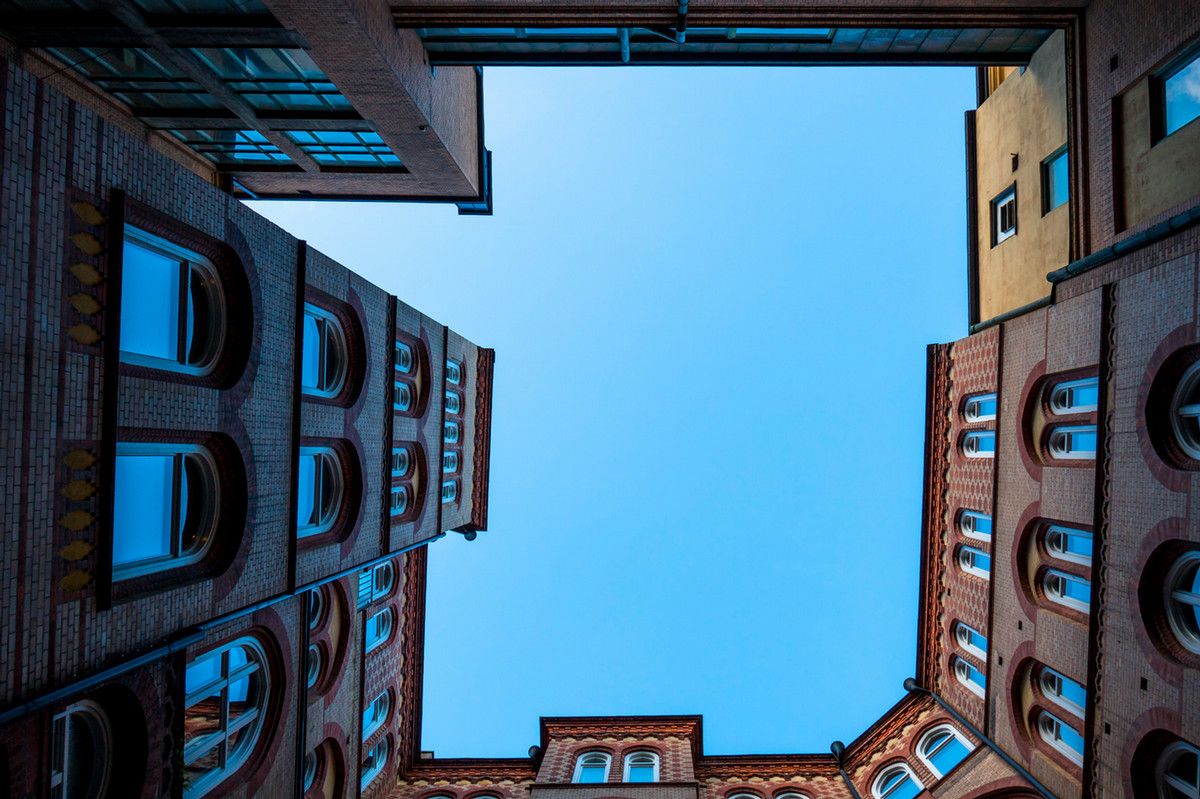It can't be that the atmosphere has a blue color like the blue of a tinted windshield. In that case, going outside in the daytime would be like walking around inside a blue glass bottle, with a blue sun shining blue light everywhere, and blue stars and a blue moon at night.
The blue can't be from dust, because the air over gravel parking lots and quarries is whitish, not bluish.
The blue can't be the result of water droplets. Clouds are made of water droplets, and clouds are white. It's not a matter of relative humidity, either; a dry sky over Arizona can be just as blue as a humid sky over Minnesota.
Blue is not the color of outer space. The background of space is black. So, the sky is black at night -- it's only blue during the daytime, when the sun is shining on the atmosphere.
The sun shines with all the colors of the rainbow -- blue, yellow, red and all the rest -- mixed together to make white light. The reds and yellows pass through air easily, but some of the blue portion of sunlight is scattered in every direction by air molecules. When you look to the sky on a clear day, you see blue light scattered from sunbeams by molecules of nitrogen, oxygen and carbon dioxide.
The more air, the more scattering. In early morning and late afternoon, the sun's light passes through so much air that most of the blue has been scattered away by the time the light reaches you. The reds and yellows remain and the sun looks reddish.










